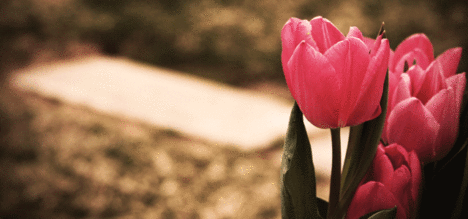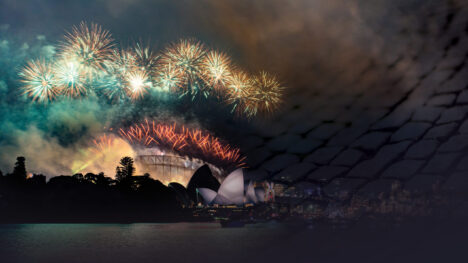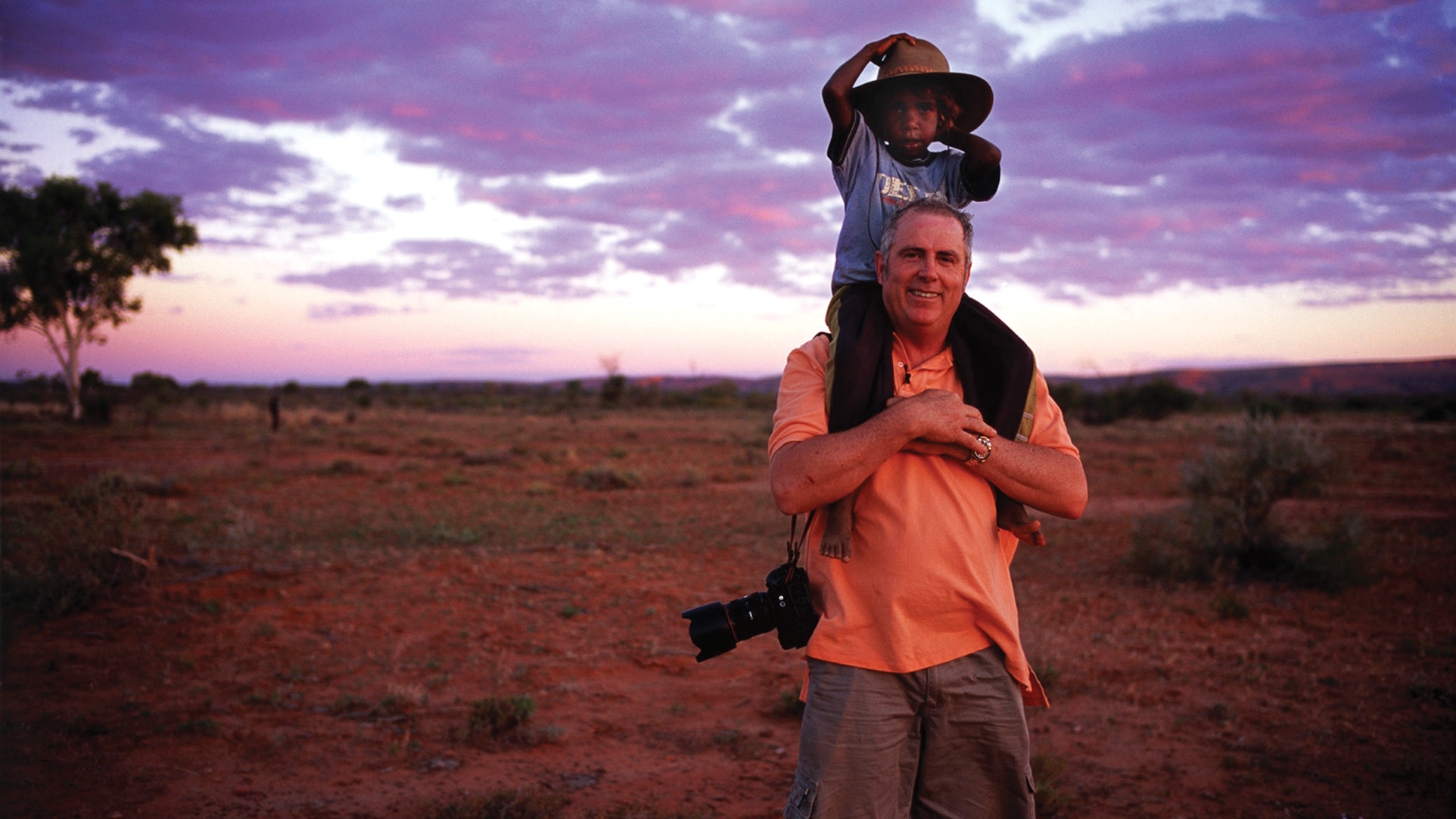
Ken Duncan is intense and excitable—a big man who favours bold floral shirts. His focus isn’t on his well-deserved fame as Australia’s pioneering panoramic landscape photographer, which has garnered him multiple awards, but on his involvement with the remote central desert Aboriginal community of Haasts Bluff/Ikuntji. And the dream of a giant cross.
How it began
It probably shouldn’t be surprising that Ken has ended up passionate about Indigenous issues—his parents spent some years as missionaries in remote Indigenous communities. “I had beautiful Christian parents,” he says. “I had no excuses, but I was one of those rebellious ones—I had to go off and hit a few brick walls. When I left school I was told I’d be the least likely to succeed.”
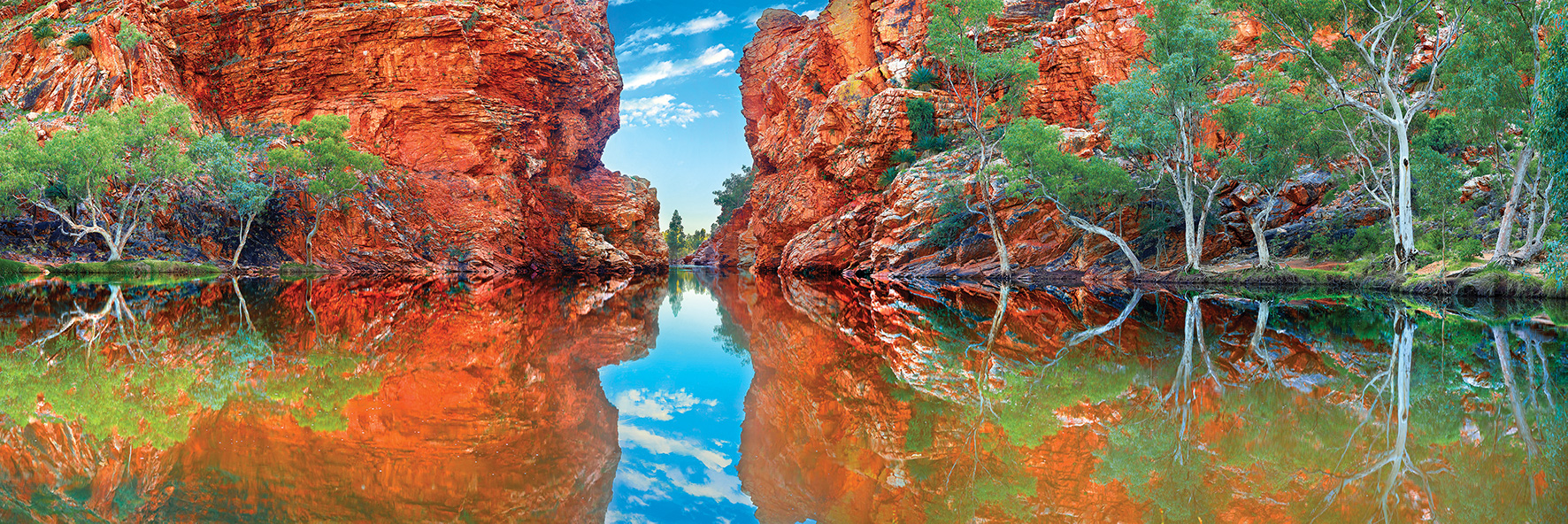
But despite the teenage attitude, Ken discovered something that would define his life. “I was 16 at a Christian youth camp—I took a black-and-white photo and then I processed it. And I saw this print that I’d taken that morning coming up in a tray, and to me that was an epiphany: Whoa, I can tell a story with this. And that turned into a money-making thing; selling cameras and stuff. But I lost my passion—I got caught up in possessions and houses; what they call ‘success’. But I found that I didn’t own my possessions, they owned me; I was just feeling crowded in by everything and I thought, There’s got to be more to life.”
It was a new model of the Widelux swing lens camera that sparked something in Ken, even as his existential angst continued to bubble away. “I found out about this panoramic camera that our company was bringing in,” he says. “I took it over to a surfing trip in Bali and when I came back, [developed the film and saw the results] I said, Man, this is the medium I’ve been looking for! I decided to sell everything and take off—photograph Australia.
“Really, my journey to start with was to try and find a meaning to life. I went through Buddhism, Hinduism, Aboriginal spiritualism, all sorts of things. And constantly, all the way along, I’m taking photos—and, if you are really genuine about photography, at some point you’ve got to look at the photos and you start to realise there’s something behind it.”
Like most people’s conversions to Christianity, Ken’s involved a dawning realisation rather than a sudden flash of insight. “I look back now and I see clearly where God was really trying to get my attention,” he says, pointing to a number of dramatic turning points, including his escape from the dark spiritual powers of witchcraft and a close call with hypothermia in Tasmania. But God was also whispering to his heart through the quiet majesty of the landscapes he was photographing, an experience he’s now keen for others to share. “The whole intention for me is really to try and remind people of the beauty of God’s creation—so they can reflect on the bigger picture. People even now say, ‘Show me God,’ and I say, ‘All you’ve got to do is open your heart and open your eyes—He’s surrounding you.’”
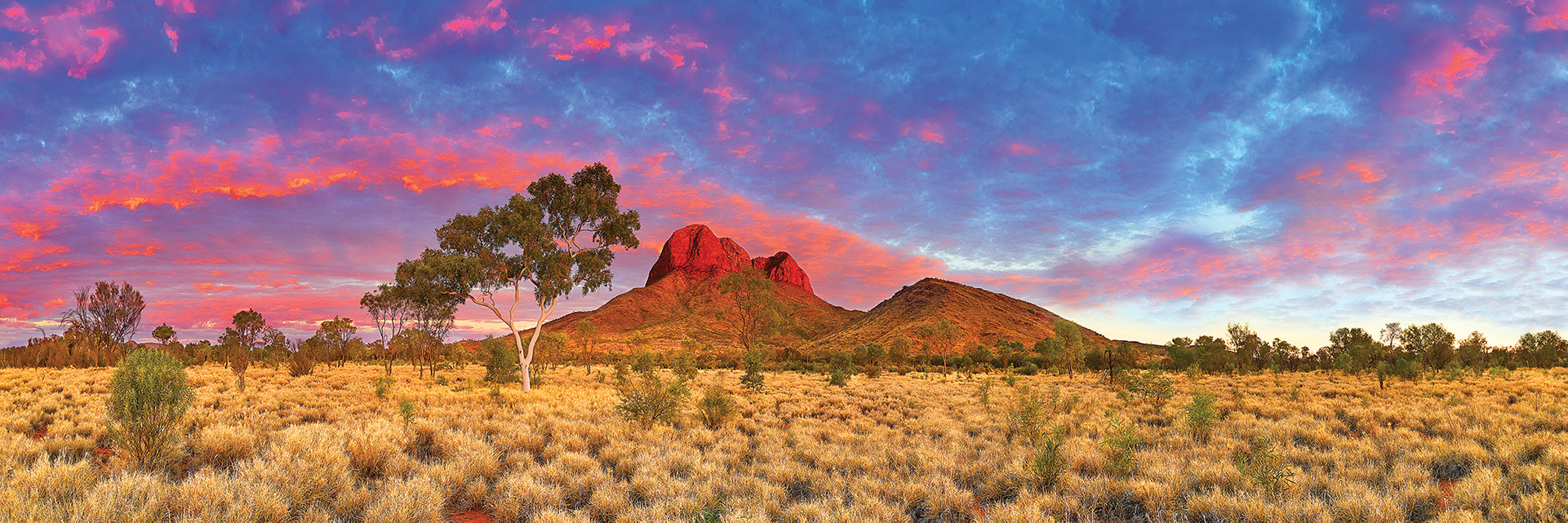
Making a difference
The Ken Duncan products that caught the public’s attention in the 1980s were his limited edition prints of panoramic landscapes, dubbed “Panographs”. Australians suddenly discovered the impact of a high-quality framed photograph presented as art and it wasn’t long before homes, commercial spaces and public buildings were displaying Ken Duncan’s work (and other photographers were rushing to replicate his success).
Ken says he’s received “thousands of letters” from people who have come across one of his prints or coffee table books at a crucial time in their lives—hospitalisation or even the brink of suicide. Time and again, the beauty of these images has been a powerful catalyst for positive change and healing. “For me that’s the ultimate compliment,” he says.
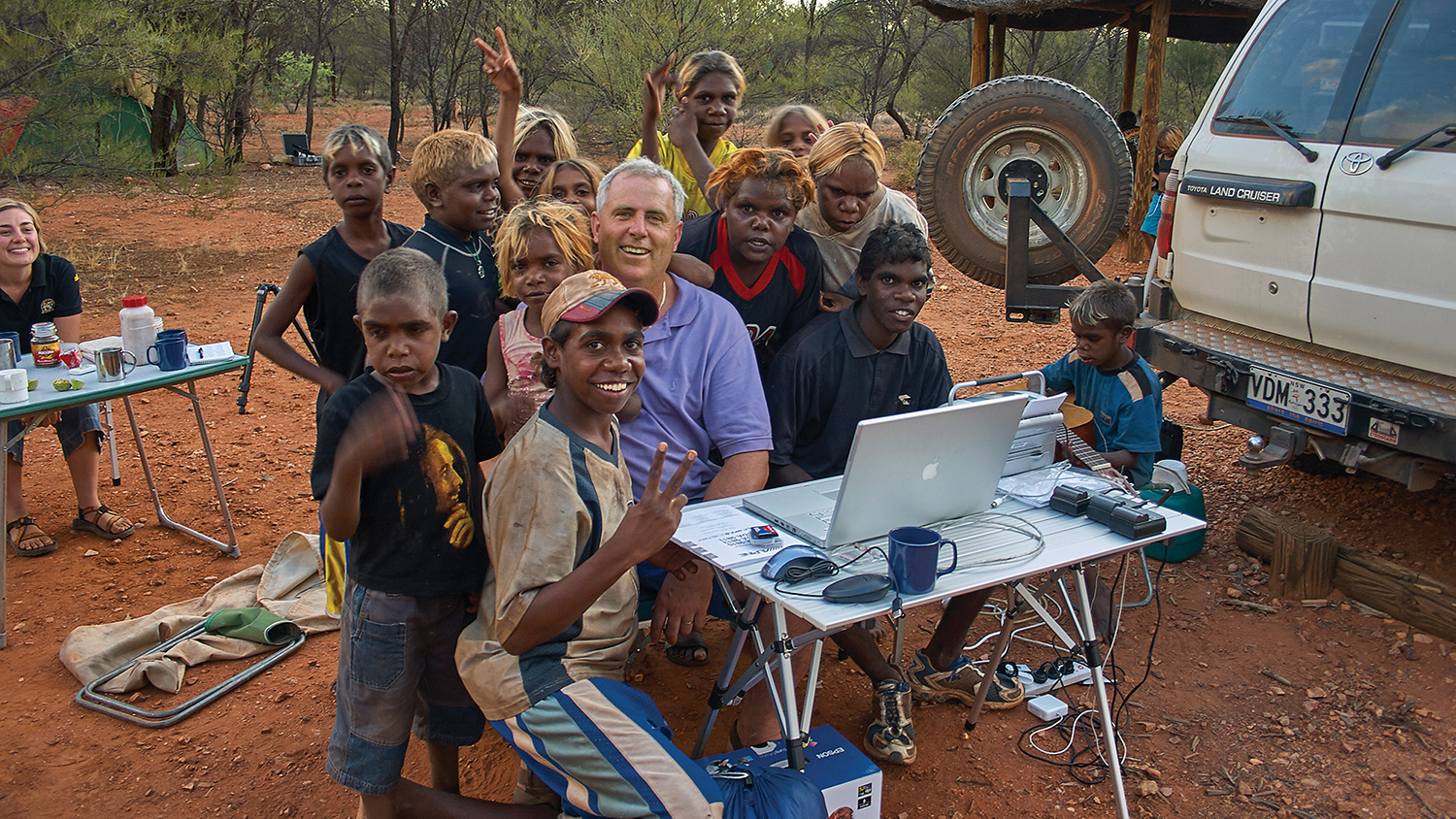
Ken clearly loves having a camera in hand, but, for him, it’s important to step out from behind the lens and engage with the people around him. That’s how he found himself, more than 15 years ago now, in a crucial conversation with an Aboriginal elder at Uluru. Ken was expressing his frustration at the permits and regulations that control photographers’ access to Aboriginal sites in the Northern Territory, when the elder cast the restrictions in a different light. “He said, ‘Well look, all these people come out here and take photos,’” Ken recalls, “‘but what do they ever put back into our communities? Our kids have no access to this technology that you all take for granted—we’re sort of left behind.’
“This was a really valid point,” Ken remembers. “So that’s where we started—doing some workshops out in the remote communities with some kids who were suffering from petrol sniffing. We grabbed this whole bunch of them and took them out bush with cameras. And after two or three days we started really connecting with them. By the end of about 10 days they were just new people.”
Wanting to avoid the all-too-typical pattern of one-off charitable projects, Ken and some supporters decided to put down roots in Haasts Bluff, 230 kilometres west of Alice Springs. “I saw in this community a real hope,” says Ken, who admires the deep Christian spirituality he’s seen there. “We gave the kids access to computer programs like Final Cut Pro for editing movies, PhotoShop, and ProTools for music and in no time flat they’d be doing it better than we would be. It’s just an amazing way for them to tell their stories and create income streams and still have connection to their land, which is so important—it’s where they draw their inspiration from.”
Under the umbrella of the Walk a While foundation, which Ken helped establish, there’s now a media training centre at Haasts Bluff, as well as a young couple based in the community permanently as trainers.
Higher purpose
In 2009, Ken was visiting central Australia for an Easter worship festival, when a number of Aboriginal elders and others approached him separately, saying that attendees had been seeing visions—vivid mental pictures of a cross on Memory Mountain, a rocky outcrop about 15 kilometres out of the Haasts Bluff community. Initially Ken thought this was some kind of spiritual metaphor, but when the elders asked him to help with the government permissions and paperwork to erect the cross, he realised that they hoped to make these visions a literal reality. Even then, he imagined, as he puts it, “a couple of four-by-twos, a couple of bags of cement”. It wasn’t until he’d agreed to help out that he fully realised what the local people had pictured—a cross of at least 20 metres high; a major feat of engineering and bureaucratic wrangling.
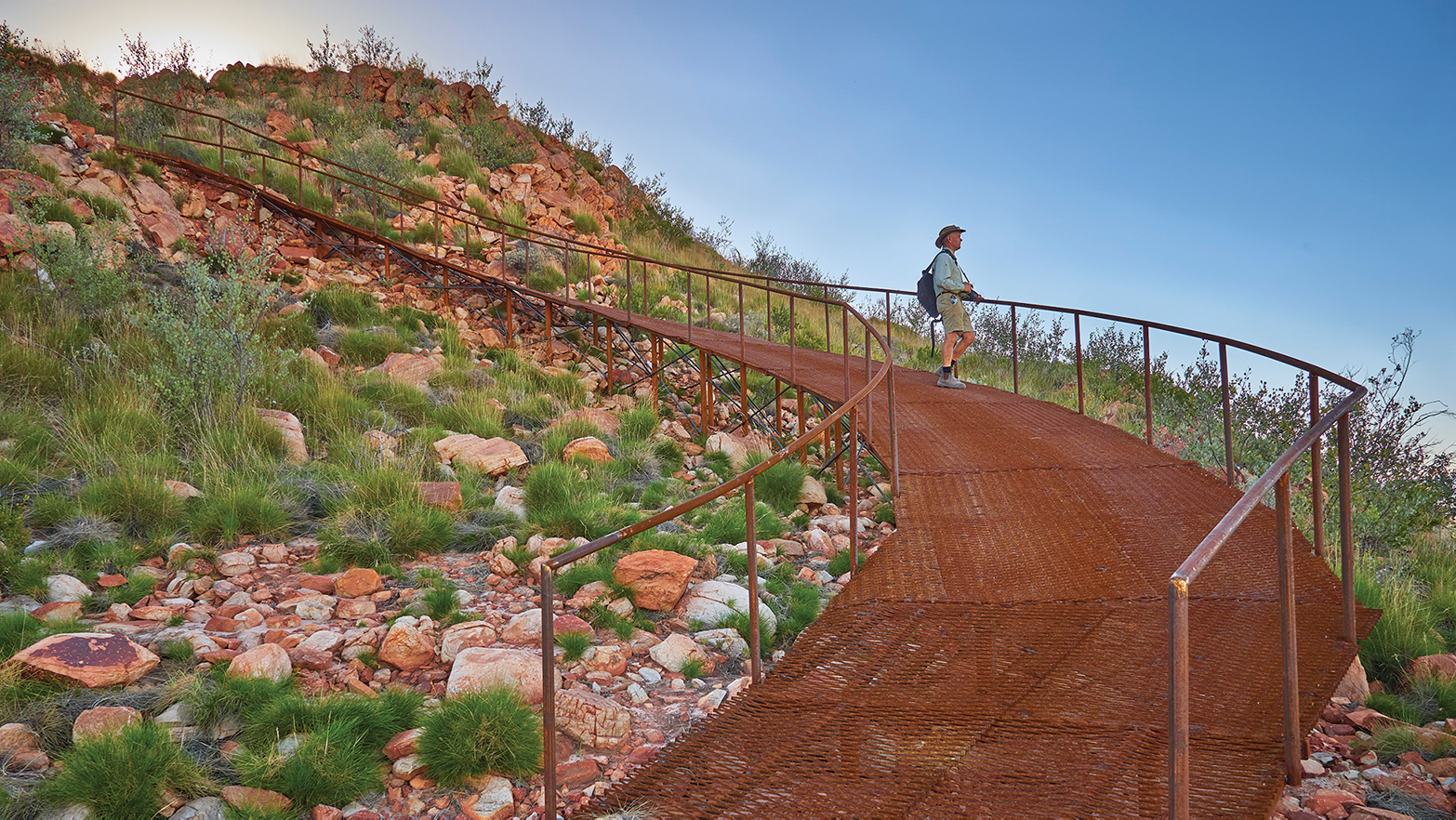
“We’ve raised $800,000 for the cross,” says Ken. “We’ve got the track all the way to the top—we wanted to be environmentally friendly; we didn’t want to scar the mountain; we used Core 10 steel, which rusts and blends in. Now we’ve got to raise another $600,000 to build the cross—some of that money has already been promised. We know basically everything we need to do, down to every nut and bolt.
“I know beautiful landscapes—this is my favourite part of the whole of Australia, scenically. From the top you see some of the tallest mountains west of the Great Divide. This cross at night, it will just glow. You’ll see it from the east for miles and miles, floating in space.
“I believe this cross is like God putting a battle standard in the heart of the nation whereby He’s getting our focus back. And it doesn’t matter whether a person is Christian, non-Christian, whatever—everyone will be welcome to go and pray on that mountain. It’s about a focus point and the Aboriginals, they’re the ones who’ve come up with this vision. You wait and see when that cross goes up, the tribes will come from all around.”
Ken is excited about the potential that the cross on Memory Mountain will have for tourism and the local jobs that will flow from it. But despite his commitment to seeing Indigenous people empowered, he’s cynical about the increasingly divisive political climate in Australia and around the world. He has no illusions about where the ultimate answer lies: “We need to get people focused back on our only hope, and that’s Jesus—not a denomination, not a brand, just Jesus. We need to be living Christianity, not just talking about it.”
Find out more about Ken Duncan, Walk a While and the Memory Mountain cross at <kenduncan.com> and <walkawhile.org.au>.
Kent Kingston is editor of Signs of the Times. He lives with his family in NSW’s very photogenic Lake Macquarie region.





